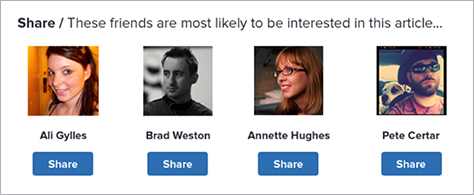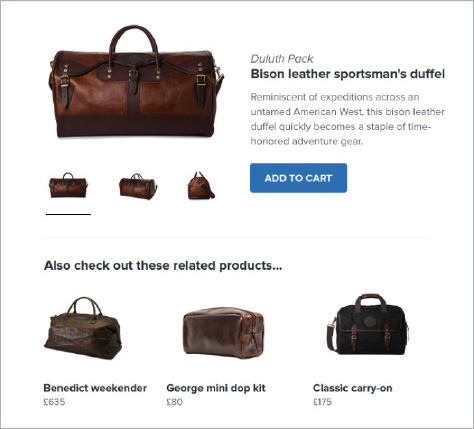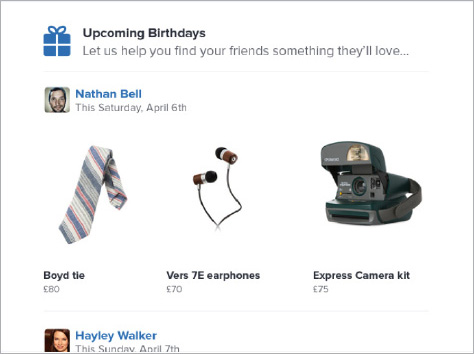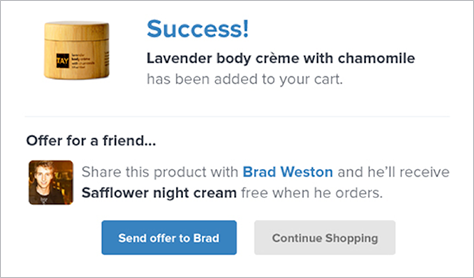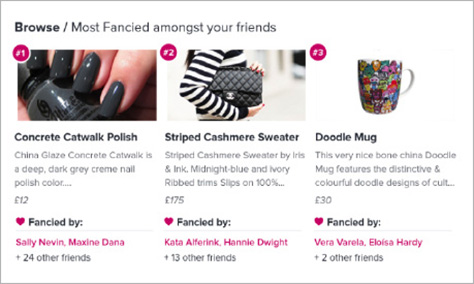In this article, I encourage you to use behavioral tools to engage users and motivate their behavior on a Web site with the help of hotspots. Hotspots are key interaction points on a Web site. They carry messaging to create a touchpoint that converts users by motivating them to purchase something or increases their engagement with the site’s content. The behavioral principles that I describe in this article enable you to increase user engagement online and motivate personalization through social media.
Convergence
Can you motivate people to come together on a Web site? Site registration aims to encourage this behavior. But why doesn’t this always work? For one thing, people become account fatigued and, thus, more resistant to registering. Even after they’ve created an account, many forget their account information or decide to leave Web sites. Finally, even when people do register, they may lie. So, it’s no surprise that we may mistakenly target people. In a study that Janrain conducted in America, results show that 92% of consumers report having left a Web site because they’ve forgotten their user name or password. In addition, 64% of those who leave sites because they can’t remember their account information say that social sign-in is an option companies should offer. Figure 1 shows an example of a hotspot on a Web site. This hotspot uses the power of social networking to increase a user’s motivation to converge with others on a Web site. When users are aware of which of their friends have registered on a Web site, there is a greater likelihood that they will go ahead and click a social sign-in button.

Social sign-in helps you to understand and engage customers through the user journey that you provide on your Web site. A research study by Forrester shows that users share 70 billion pieces of content on Facebook every month. Interestingly, another Forrester study shows a reduction in the number instances of sharing and contributing to social media networks. To boost social-media participation on a Web site and increase social sign-ins, companies should improve the online tools that they offer, making sure that they are intuitive and easy to use and, more importantly, encourage the instant gratification of interacting with content online.
For example, a site might combine the power of friends, or who’s using a site, with the ease of social sign-in as Facebook does, shown in Figure 1. This creates convergence on a Web site that provides social sign-in, personalized content, and a place where friends can gather. To encourage users to click a call to action, the right copy is also important. It needs to motivate users to click the call to action—for example, Personalise your experience. A study that Accenture conducted in 2012 found that people in the US and the UK want trusted retailers to provide them with personalized content.
Usefulness and Relevance
Users tend to share and recommend content according to the usefulness and relevance of that content. For example, a study by Estes showed that a user subscribed to a news site because he liked “the quality of the news stories.” Research by Buechel and Berger showed that people share information that is relevant and beneficial. This serves as a valuable emotion-regulation tool. People have an affiliation toward others with whom they can share their emotions, and it is less threatening to share information online.
Individuals begin to rely on their online social network to share what they think and feel; hopefully, with the outcome of gaining social recognition. This helps individuals boost their sense of well-being by increasing their perceived social support. With this in mind, companies need to combine relevant information with the ability to share it with a wider network. While your content may be useful to people, it is also important to allow them to personalize content. For example, as shown in Figure 2, a user’s clicking the Want it button for a product should enable the system to monitor and track the products that interest the user. This improves the personalized user journeys that a site provides. Figure 2 also shows that users can share content once they have liked a product online.

Immediacy of Information
Users choose to look at content because of the timeliness of the information that you present to them. A study by Kelleya and Gorham showed that people are likely to respond to content that is relevant and timely. The effect of showcasing timely content is increased interaction and engagement on a Web site. The hotspot shown in Figure 3 couples personalized content recommendations with timeliness—creating impact when users browse the Web site.
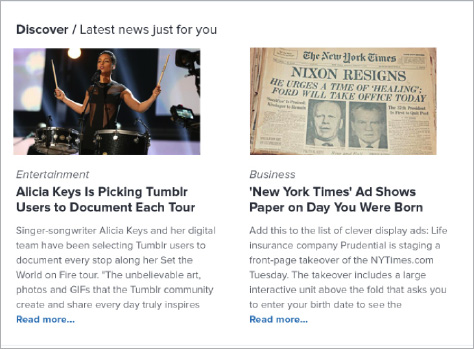
Familiarity and Trust
When users share information, that information needs to come from a trusted source. Users base their registration and sharing choices on the reputation and trustworthiness of a company or organization. A study conducted by Estes described a user’s experience in this regard, “I shared information because they were known and trusted sources of information. For my games and movies, I select known sources.”
Research online has focused on the type of trust that gets built through ongoing interactions with a Web site that help people to believe in an organization. These interactions affect their level of trust. Research by Gefen showed that people browsing through content online need to trust the vendor before they’ll make any purchase decisions. As seen in Figure 4, on-screen messages can help to build trust online by giving users a personalized experience. Online trust is important whether you are distributing information or initiating online business transactions. Users decide whether they are going to buy your information, or content, or your goods or services. Ecommerce relationships depend on trust. Lack of trust is one of the most formidable barriers to building online relationships.
An example of building trust online is the use of on-screen messages. Hotspots on a Web site personalize the experience. Acknowledging to a user that he’s new to a Web site piques his curiosity. In addition, providing an introductory video about the company induces trust and familiarity.

Luhmann suggests that one antecedent of trust is familiarity. In his theory of trust and power, trust creates a framework for understanding both the environment and the trusted party. Familiarity is an understanding of why others do what they do that a person has gained from their previous experiences and helps reduce people’s uncertainty.
According to Gefen, familiarity relates to understanding the current actions of other people, while trust relates to beliefs about the future actions of other people. The study suggested that familiarity and trust complement each other. Familiarity reduces uncertainty by establishing a structure. Trust reduces uncertainty by allowing people to have relatively reliable expectations. Gefen’s research supports the basic assumption that both trust and familiarity influence ecommerce. Their research results show that both trust in a vendor and vendor familiarity impact customers’ intentions to inquire and purchase. The data also showed that trust is significantly affected by familiarity.
Once trust has been established, another way of increasing familiarity is to learn about peoples’ social networks—once they have consented to allowing you to track their data, as shown in Figure 5. Companies should help consenting users to understand their behavior through their friends. Identifying and inviting friends who share common interests establishes a relationship.
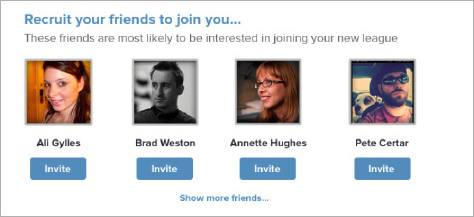
Similarities and Proximity
Can you provide elements on a Web site with which users can interact and thereby perceive a sense of belonging based on their proximity and relevance? Gestalt psychologists have argued that these principles exist because the mind has an innate disposition to perceive patterns in a stimulus based on certain rules. There is a limit to the amount of information that the mind can keep track of. When the amount of visual information becomes too great, the mind tries to simplify by grouping. We form groups in logical ways, based on what the information looks like and the location of the various items.
Similarity concerns what items look like and is a powerful grouping mechanism. As such, it can contribute significantly toward achieving unity. The more alike items are, the more likely they are to belong to groups that make sense to people. Engage users by providing content to which people can relate and that is similar to their interests. Suggesting relevant friends whose interests are similar increases the likelihood that users will click a Share button. For example, the hotspots shown in Figures 6 and 7 comprise images that appear on a Web site to showcase content, depending on users’ proximity and the similarity of their interests.
